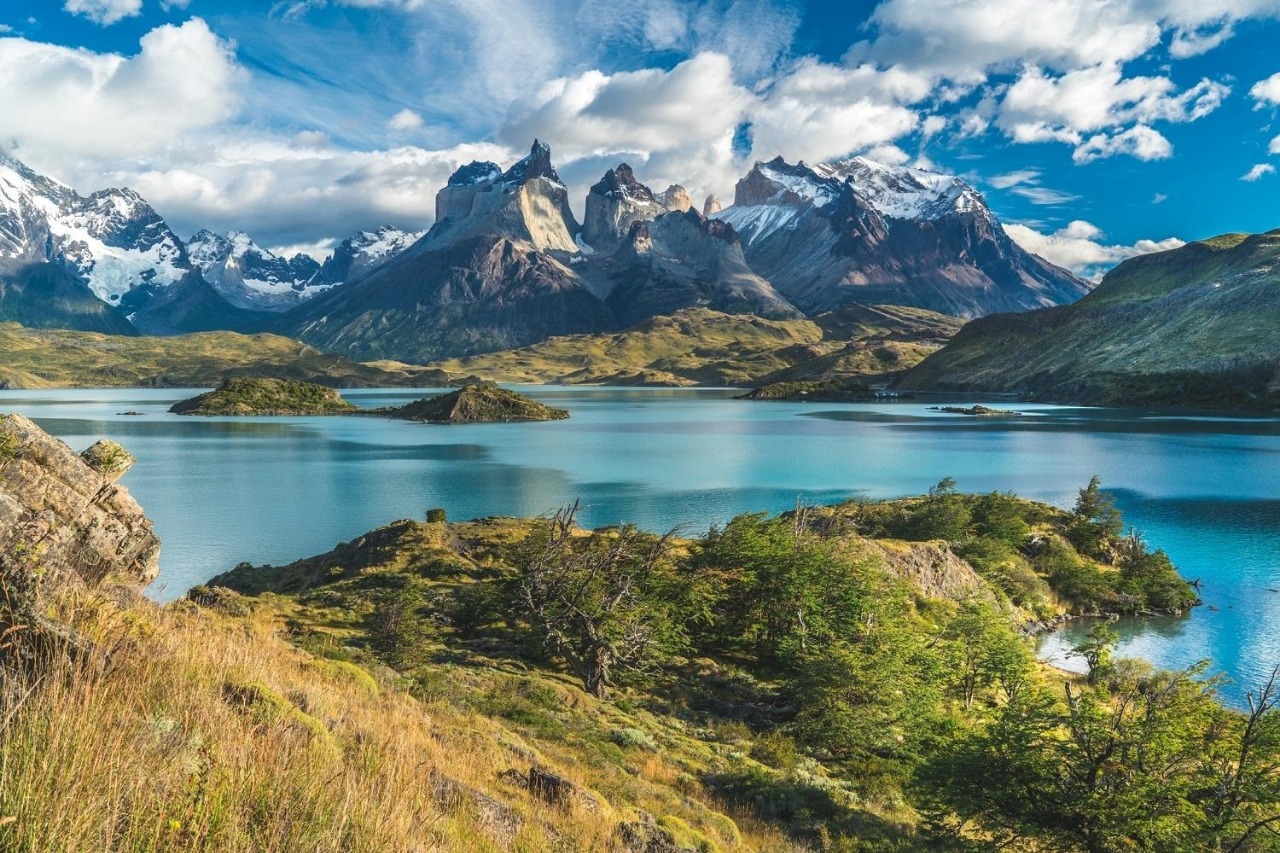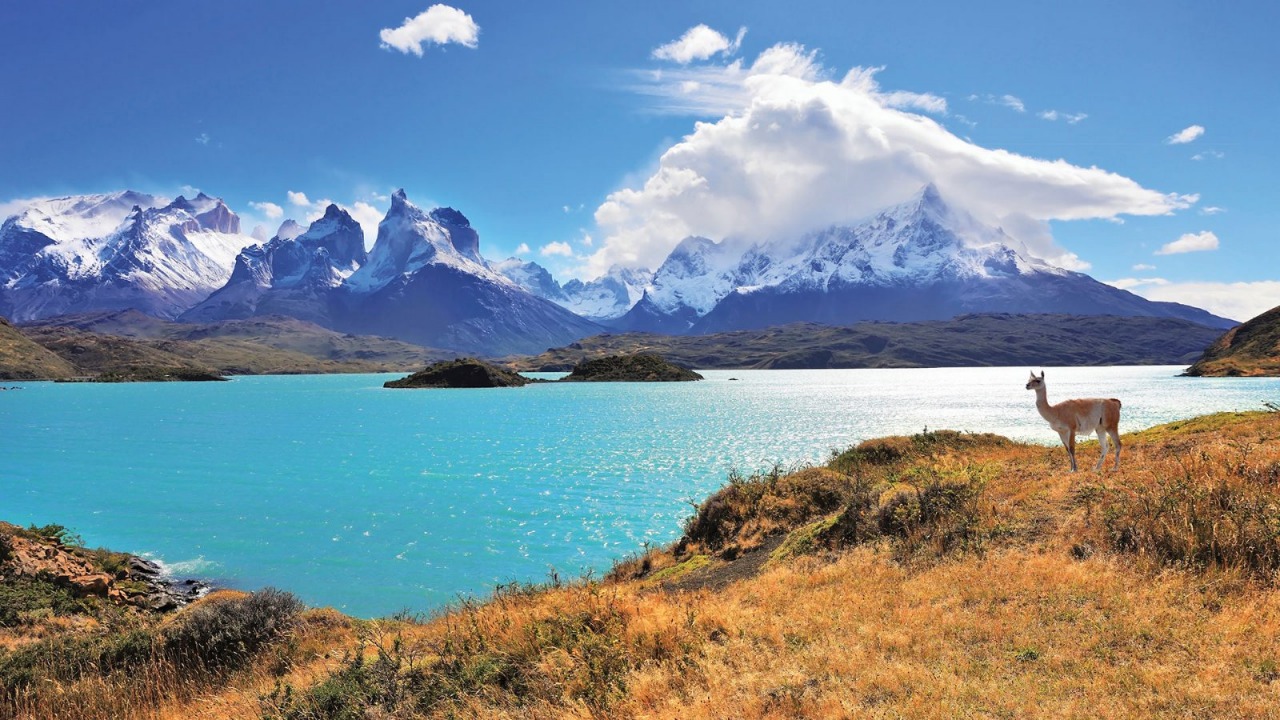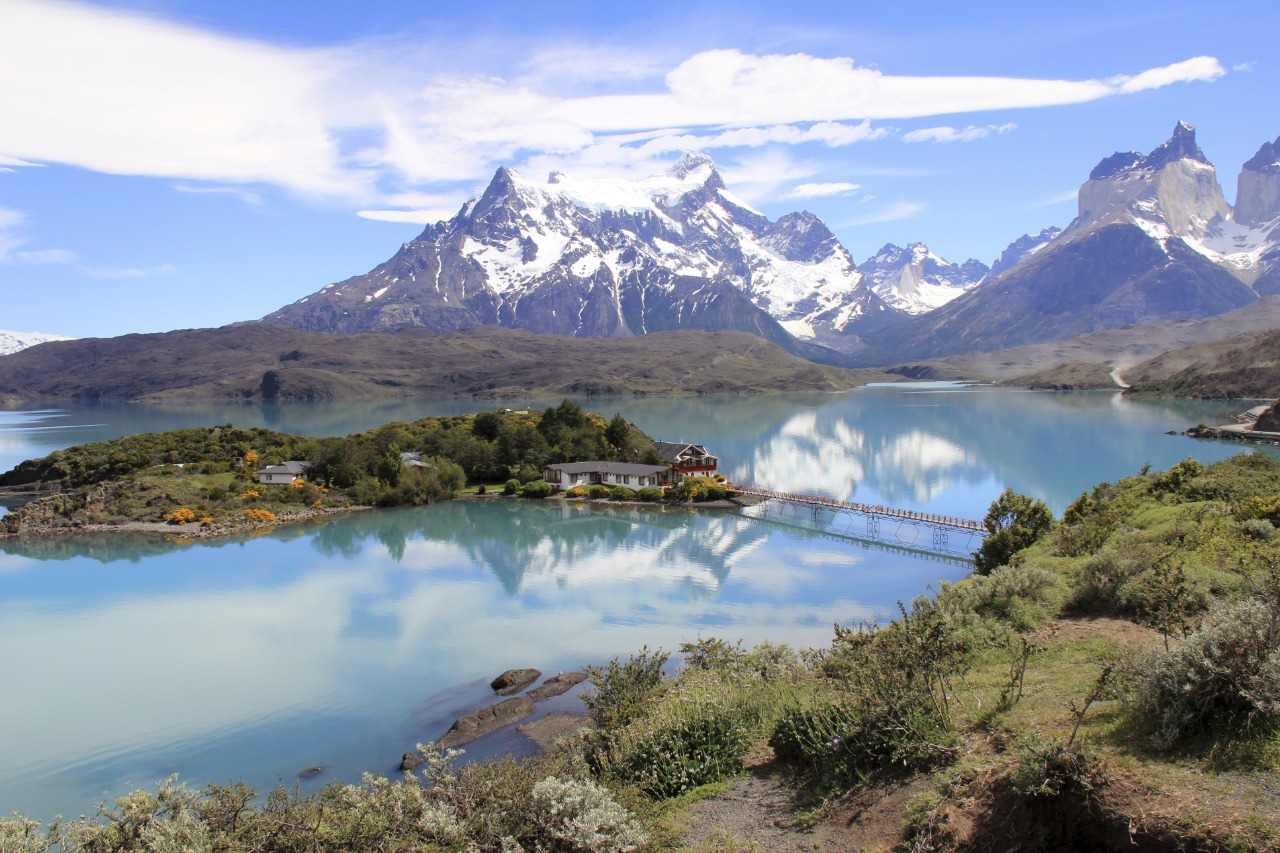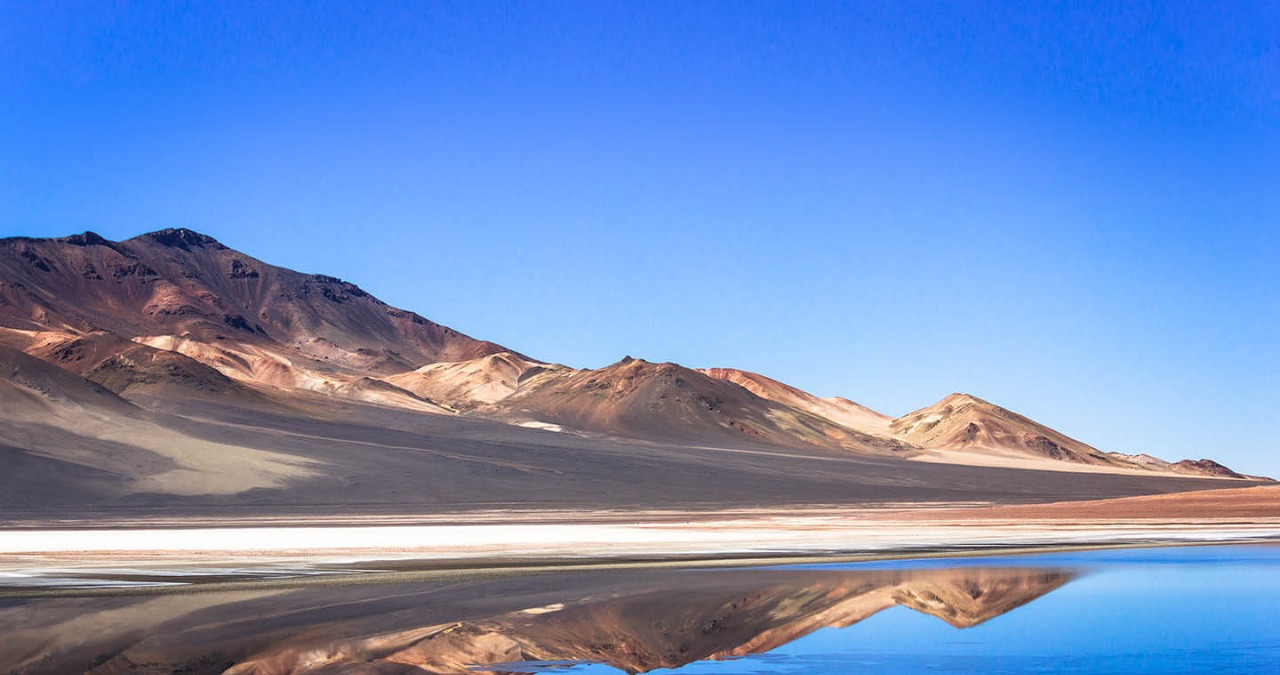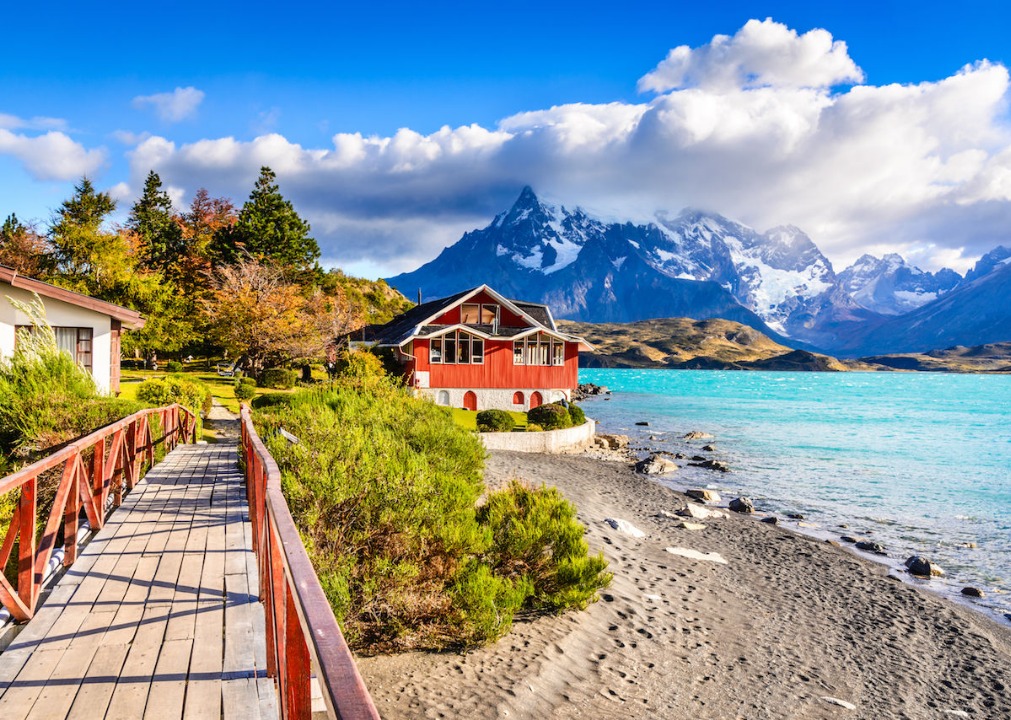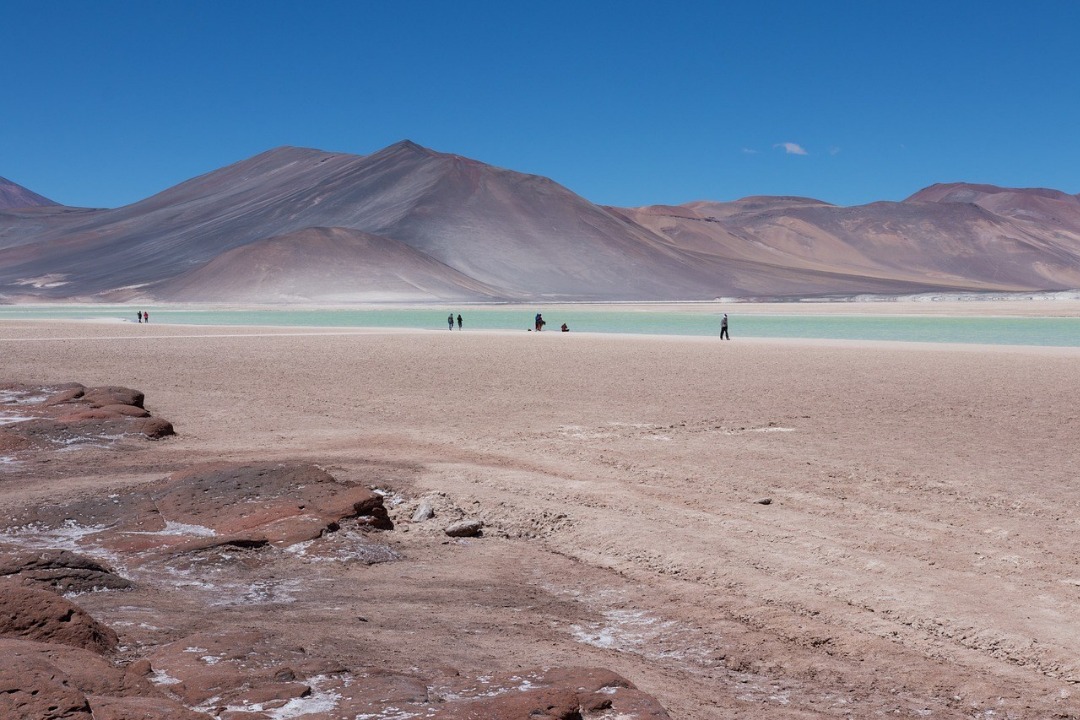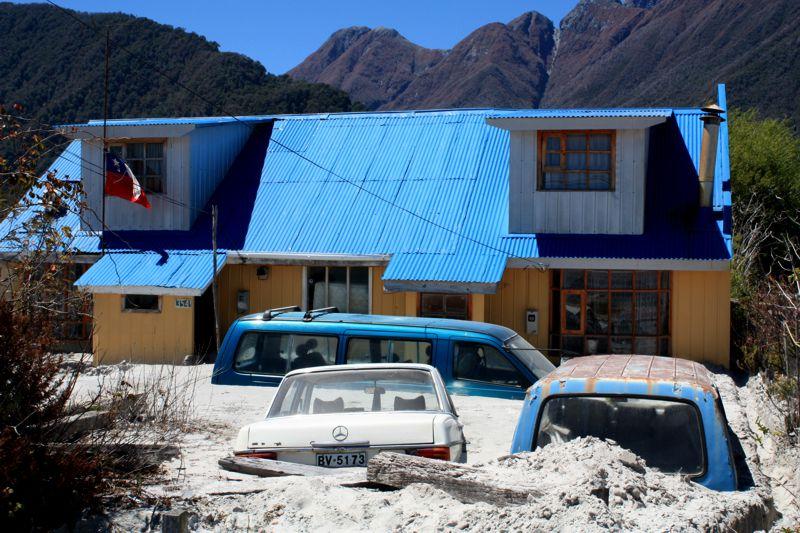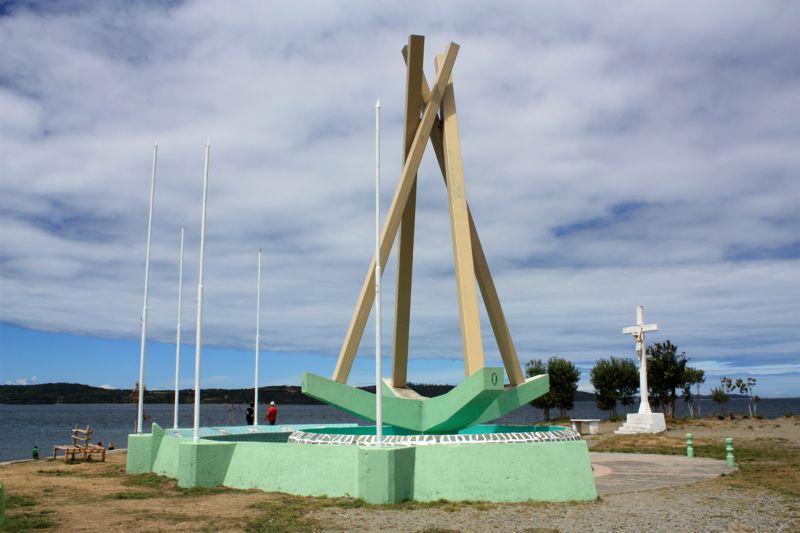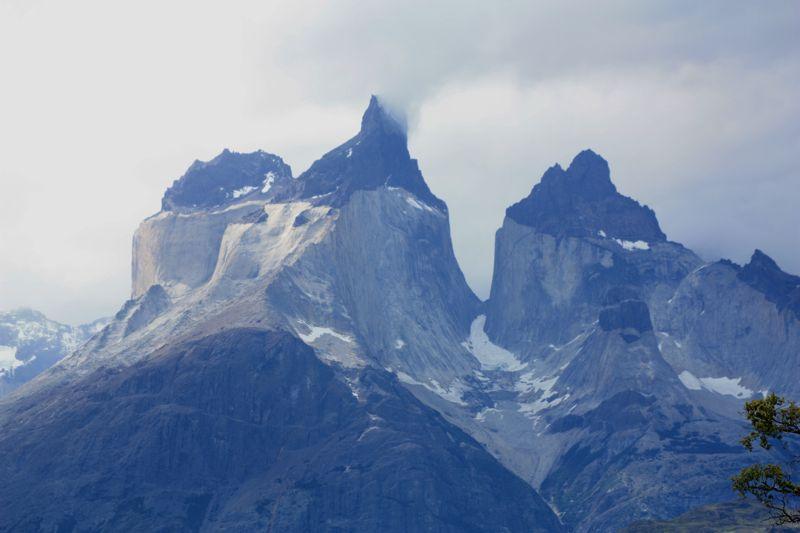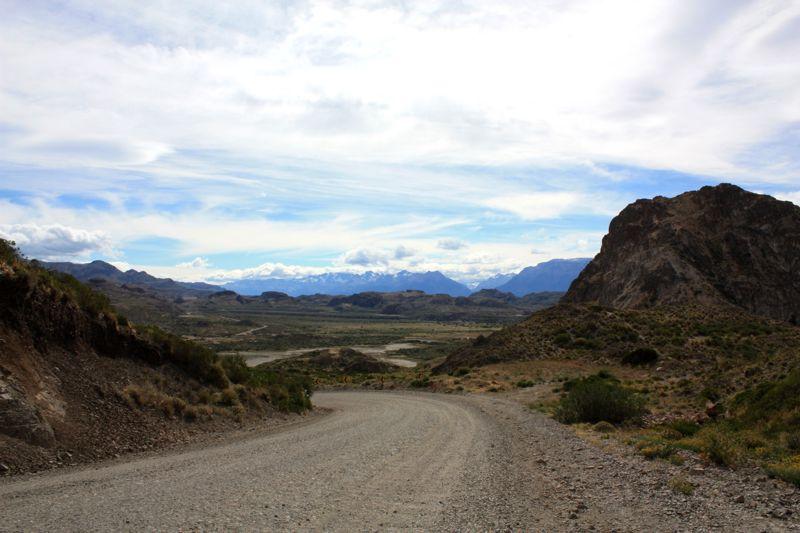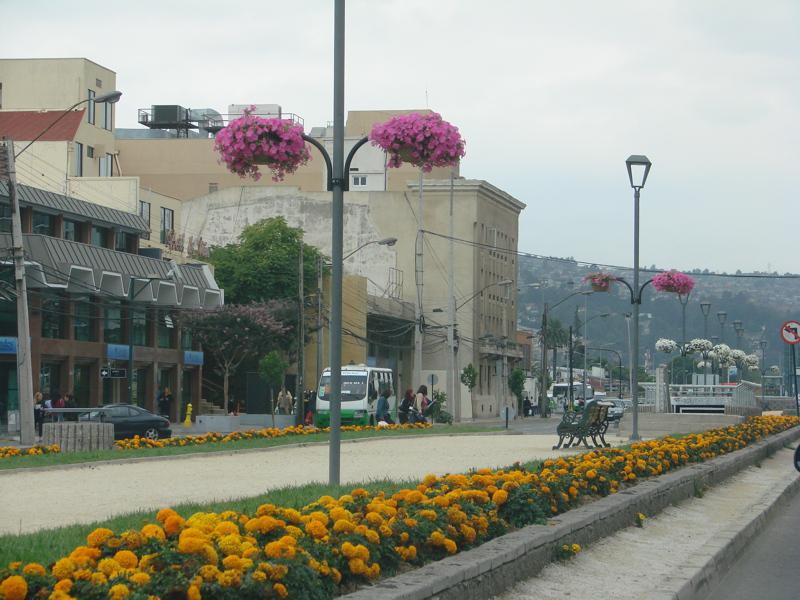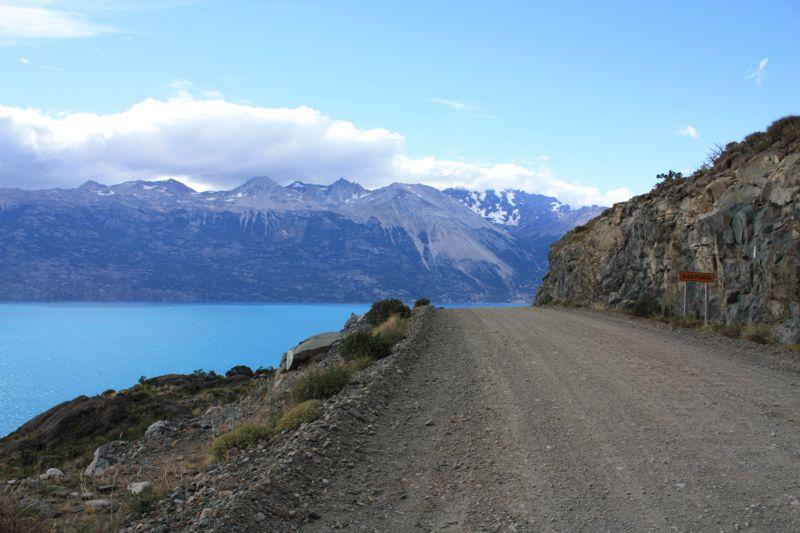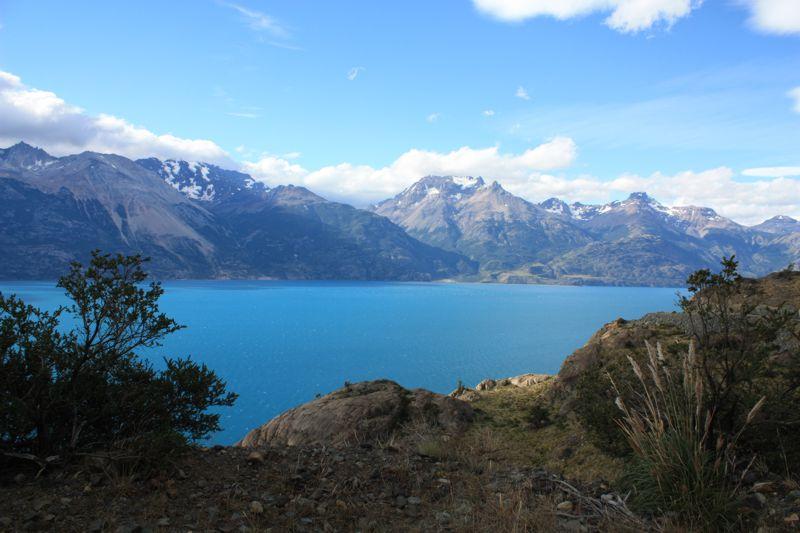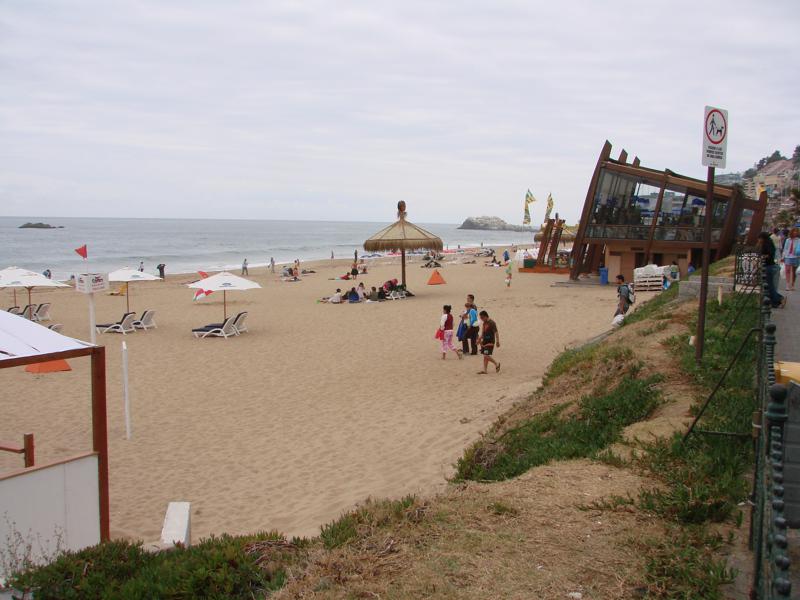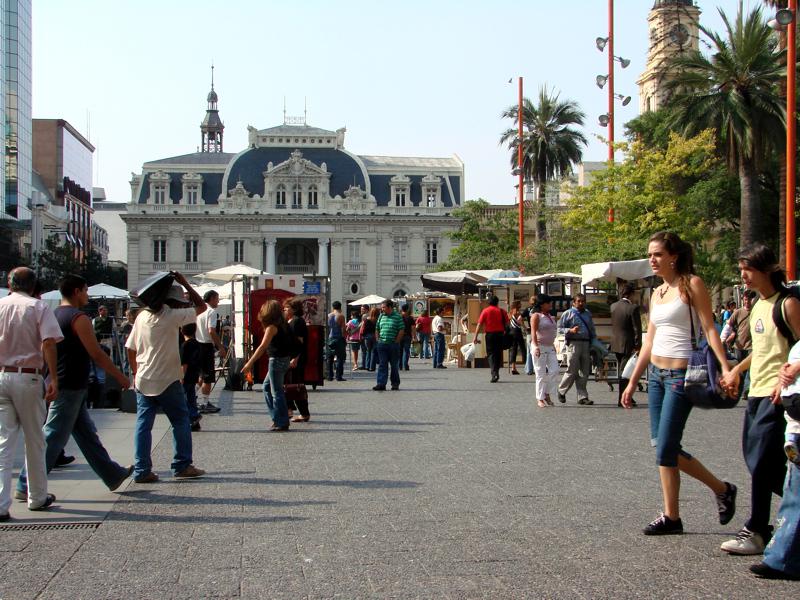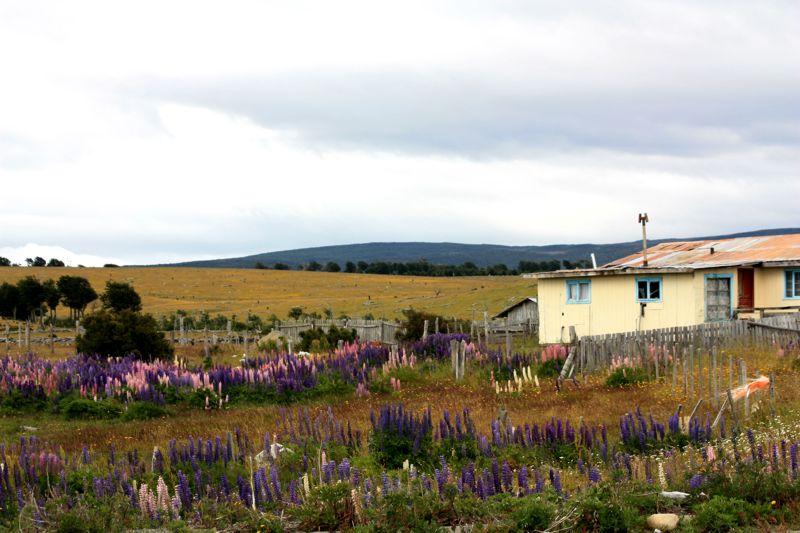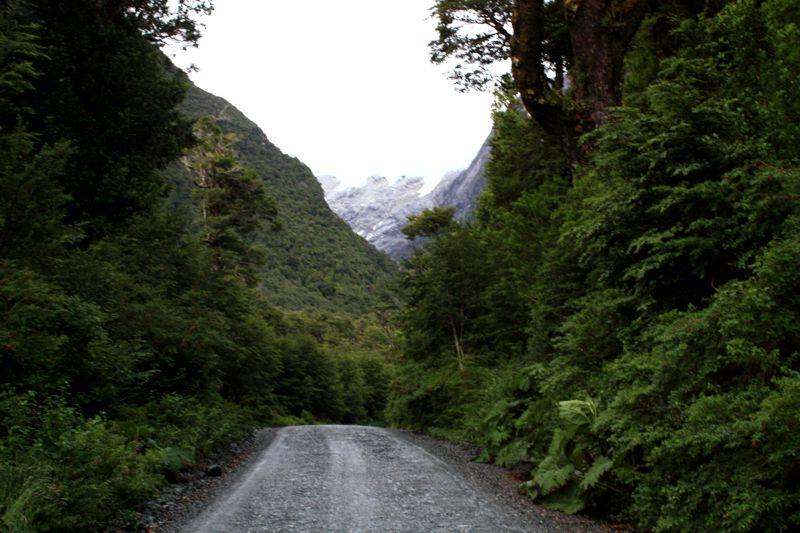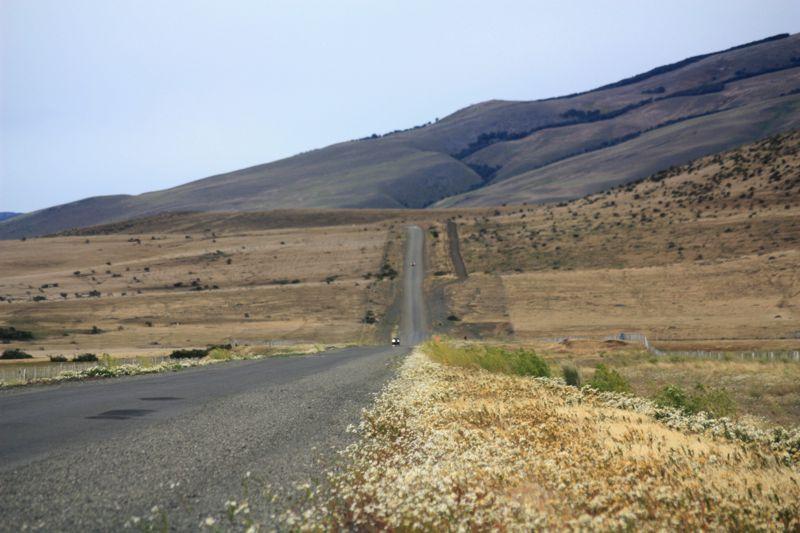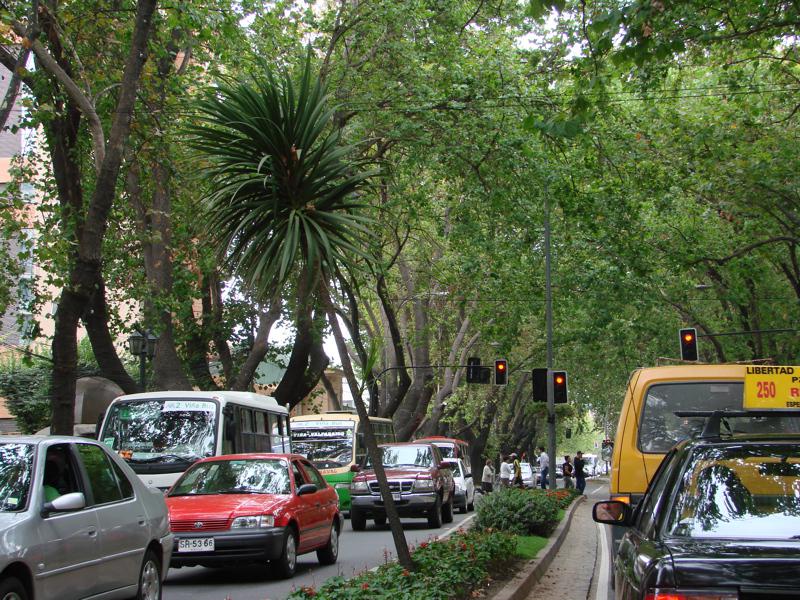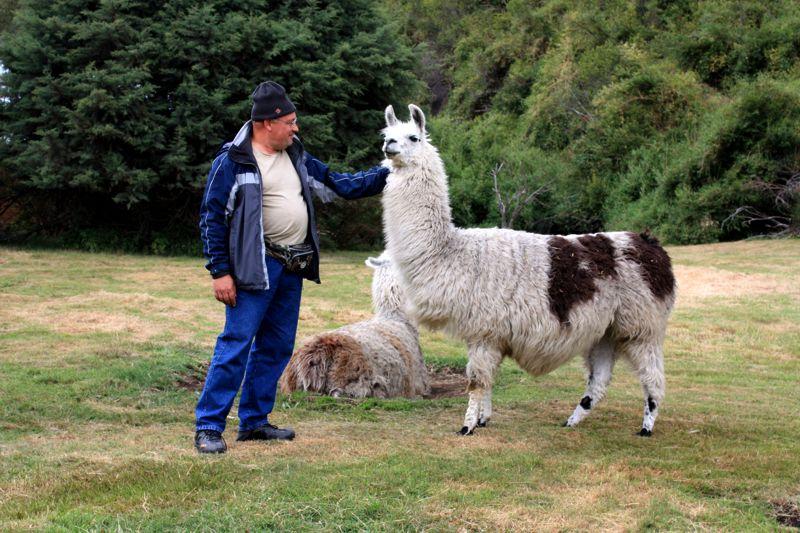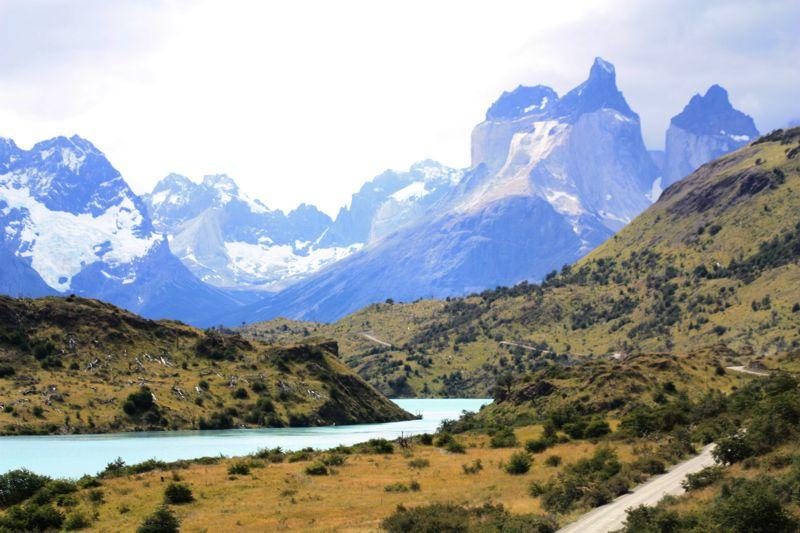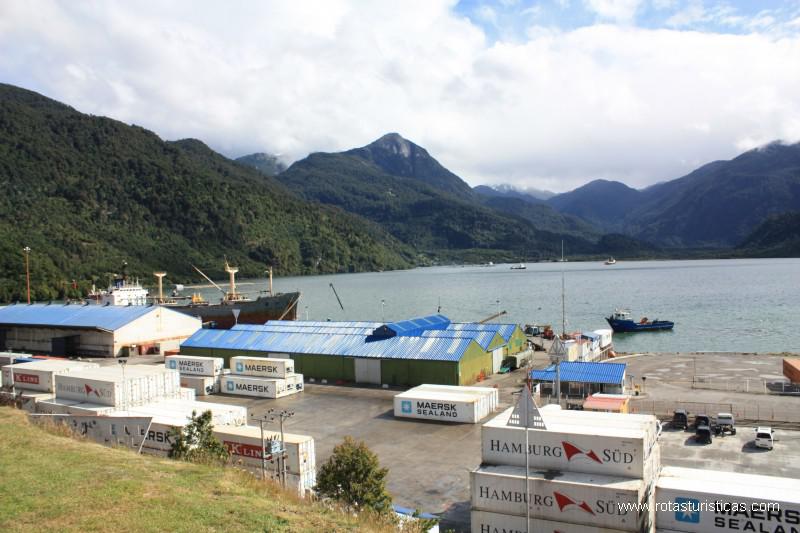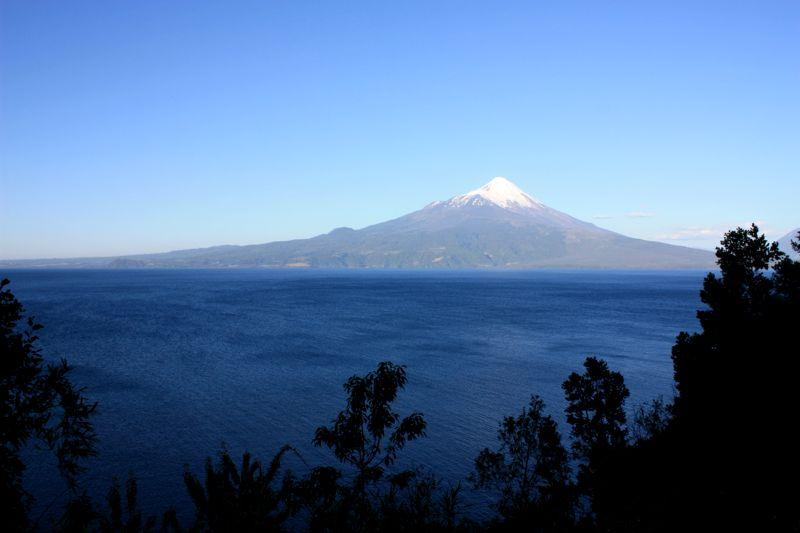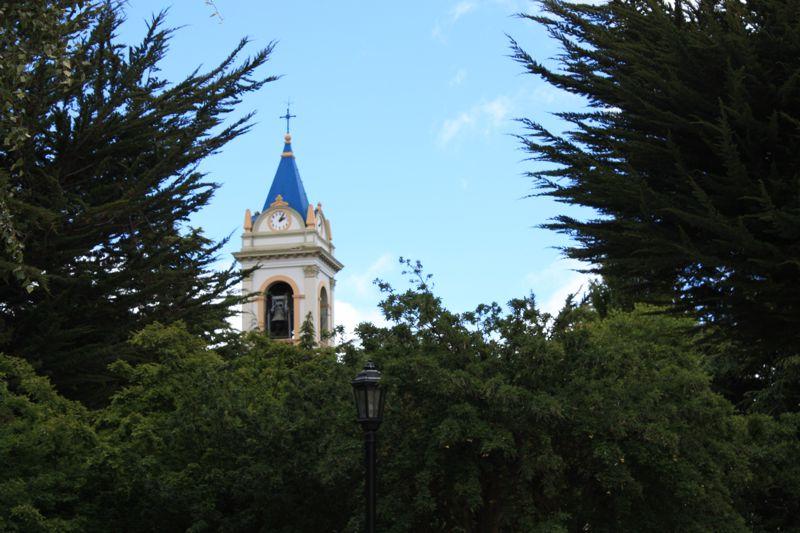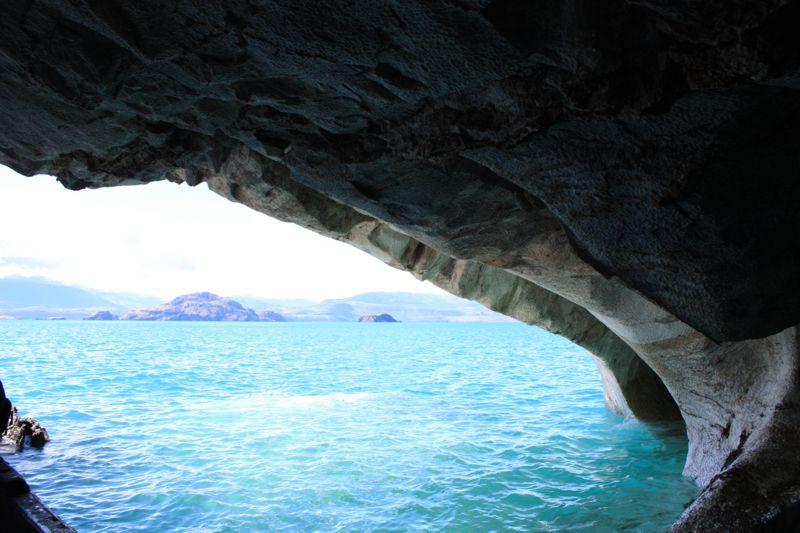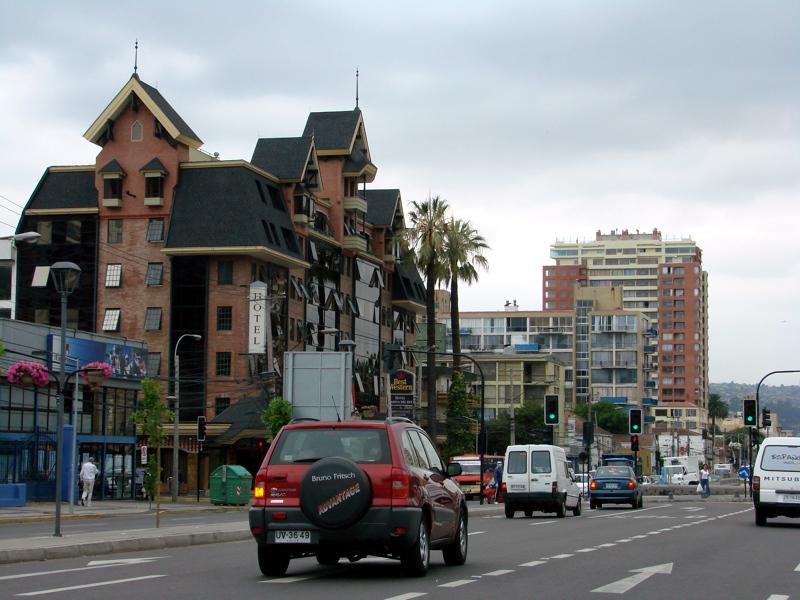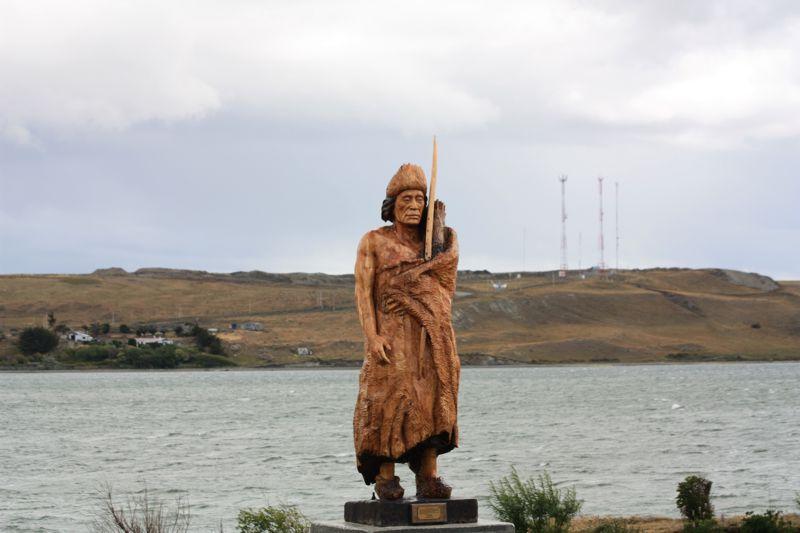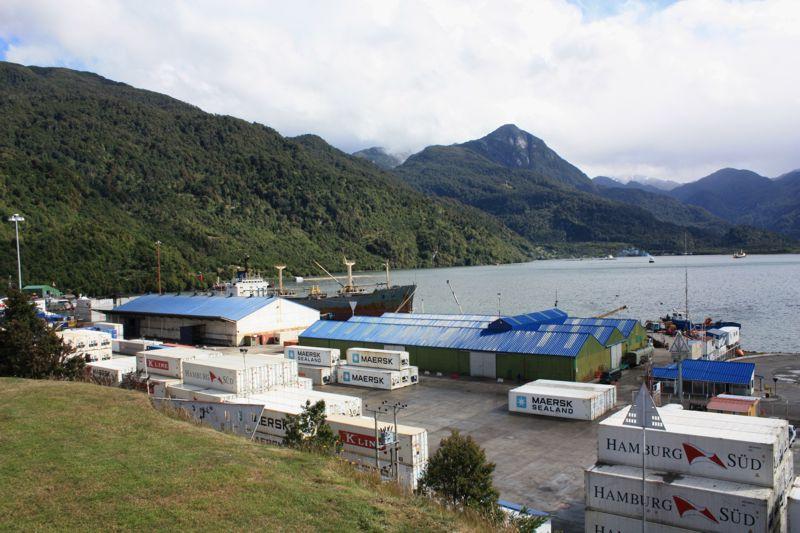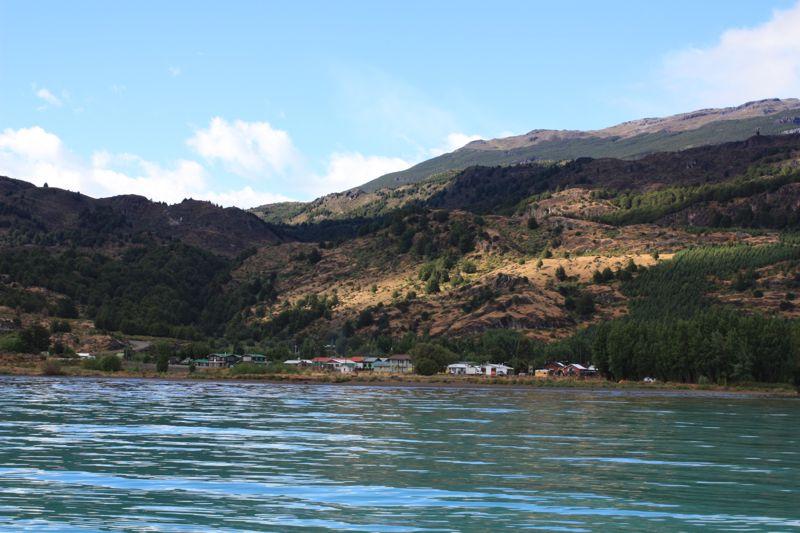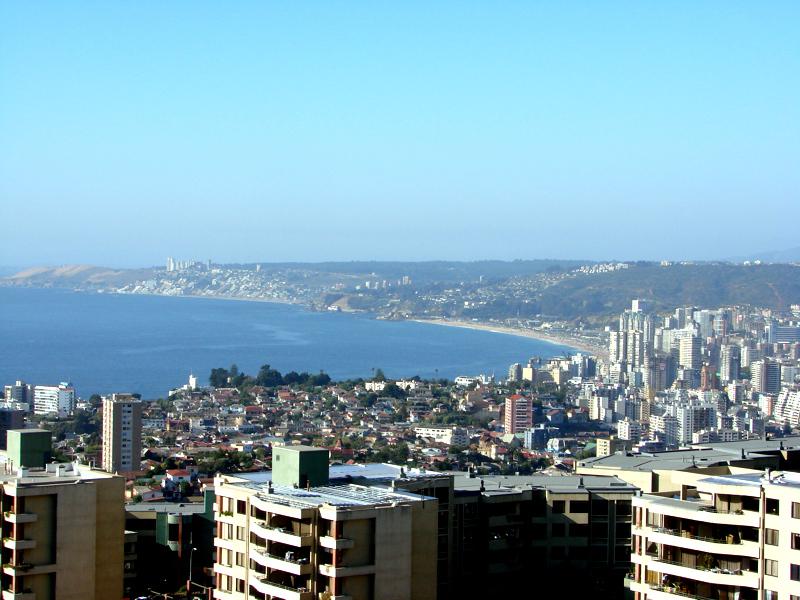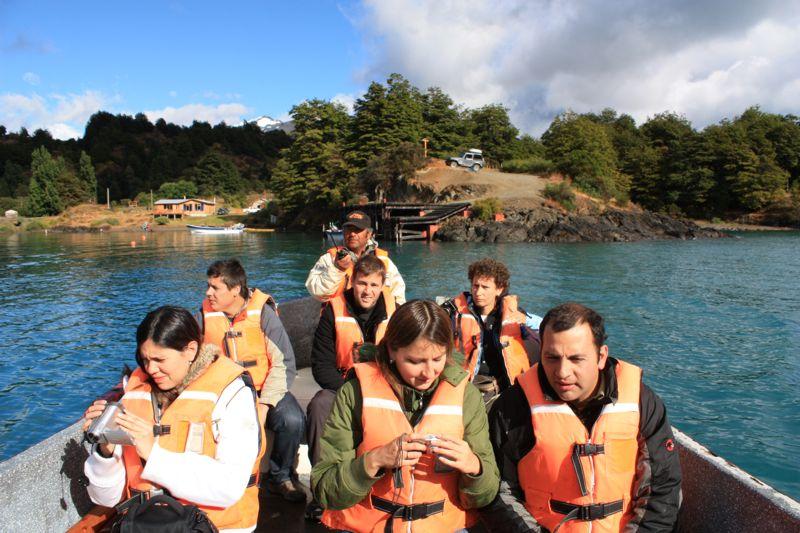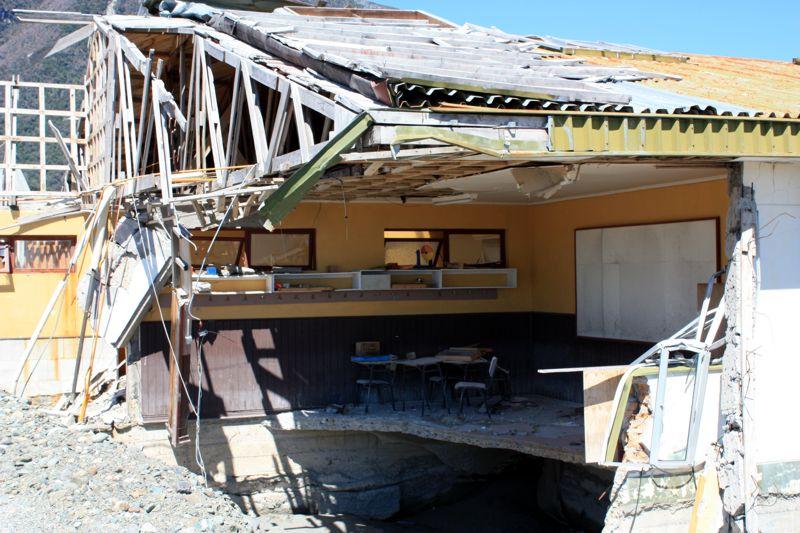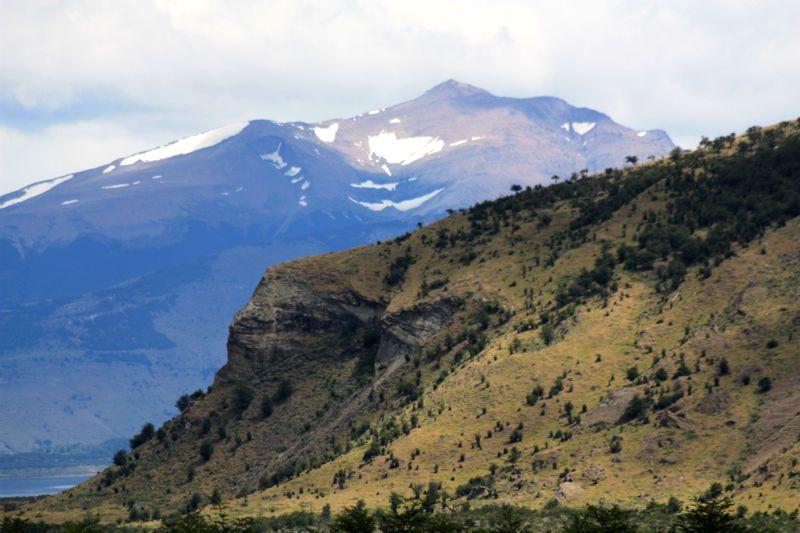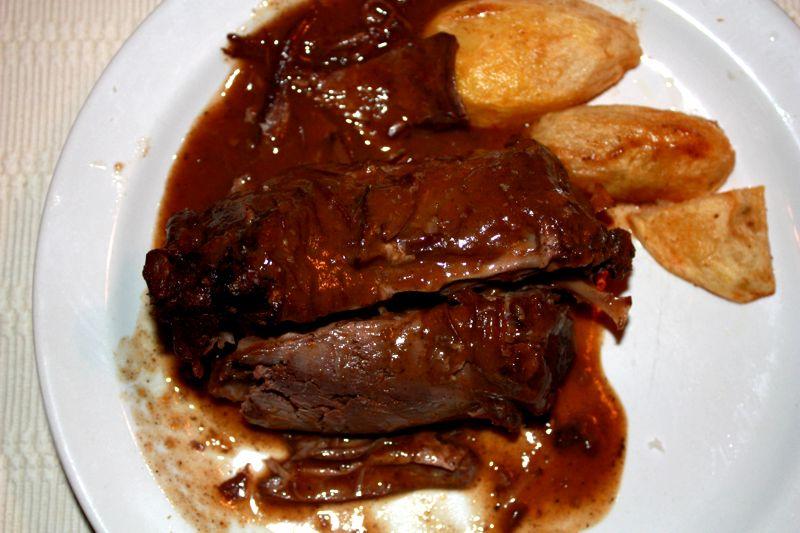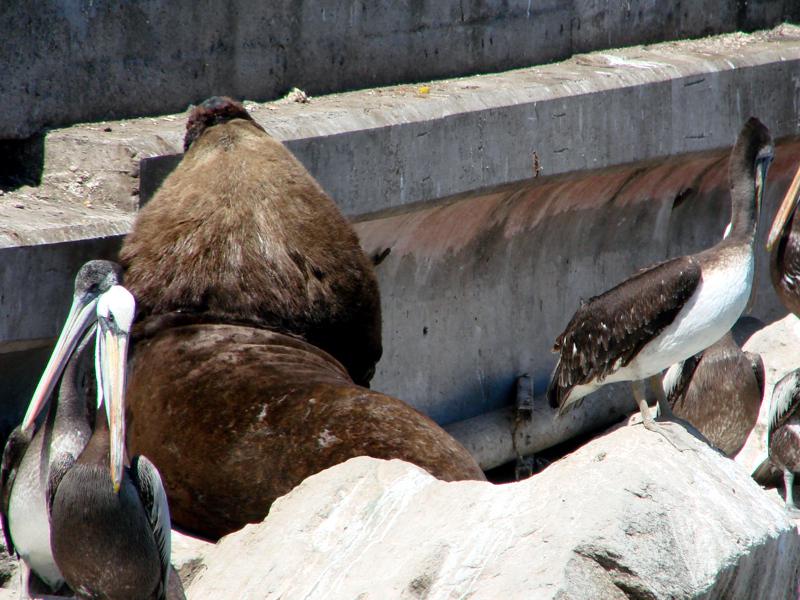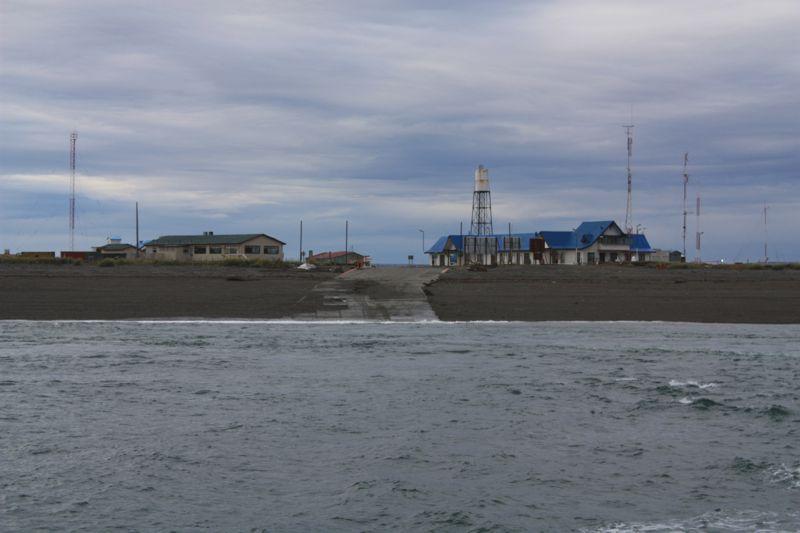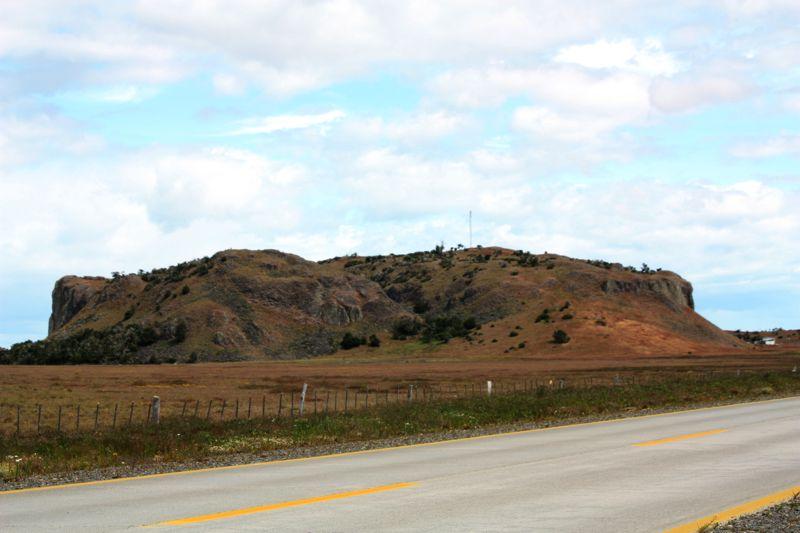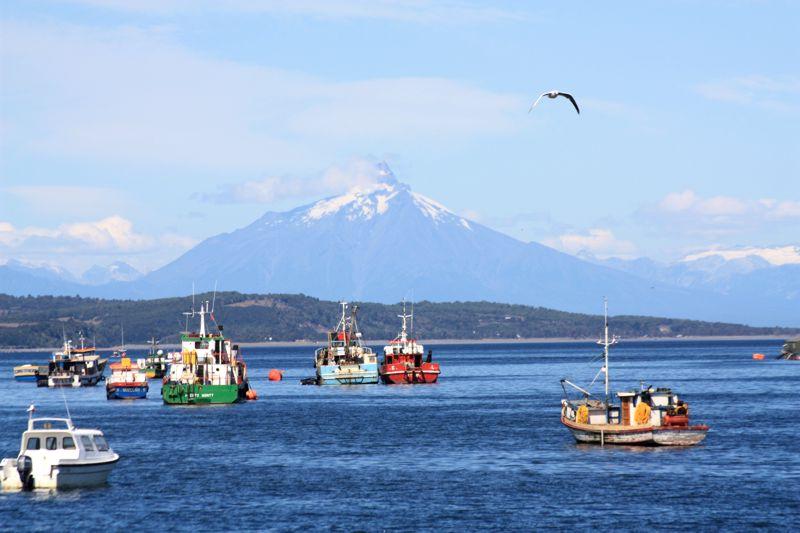Pictures of: Chile
Location map
Airports
Hotels and other Accommodation
Golf Courses
What to visit
Where to Eat
Where to have fun
Consulates & Embassies
World Nomads
The Travel Insurance with the largest coverage

The Travel Insurance with the largest coverage

Chile
The Republic of Chile is a South American country that occupies a long and narrow strip of land between the Andes Mountains to the east and the Pacific Ocean to the west.
Its capital is the city of Santiago, located in one of the plains of the interior of the Country.
It borders Peru to the north, Bolivia to the northeast, Argentina to the east and Drake to the south. The Chilean territory includes some overseas territories, such as the Juan Fernández Archipelago, the Sala y Gómez Islands, the Desventuradas Islands and the Easter Island, located in Polynesia.
Chile also claims about 1,250,000 square kilometers (480,000 sq mi) of Antarctica, but despite all claims, they are suspended under the Antarctic Treaty.
The desert of northern Chile contains great mineral wealth, mainly of copper. The relatively small central area is dominated in terms of population and agricultural resources, and is the cultural and political center from which Chile expanded in the late 19th century when it incorporated its northern and southern regions.
Southern Chile is rich in forests and grasslands, and features a number of volcanoes and lakes.
The south coast is a labyrinth of fjords, coves, canals, peninsulas and islands.
Chile is politically divided into 15 regions, in addition to the metropolitan region, which can be found in the central part of the country.
Its capital is the city of Santiago, located in one of the plains of the interior of the Country.
It borders Peru to the north, Bolivia to the northeast, Argentina to the east and Drake to the south. The Chilean territory includes some overseas territories, such as the Juan Fernández Archipelago, the Sala y Gómez Islands, the Desventuradas Islands and the Easter Island, located in Polynesia.
Chile also claims about 1,250,000 square kilometers (480,000 sq mi) of Antarctica, but despite all claims, they are suspended under the Antarctic Treaty.
The desert of northern Chile contains great mineral wealth, mainly of copper. The relatively small central area is dominated in terms of population and agricultural resources, and is the cultural and political center from which Chile expanded in the late 19th century when it incorporated its northern and southern regions.
Southern Chile is rich in forests and grasslands, and features a number of volcanoes and lakes.
The south coast is a labyrinth of fjords, coves, canals, peninsulas and islands.
Chile is politically divided into 15 regions, in addition to the metropolitan region, which can be found in the central part of the country.
Official language
Spanish
Currency
Chilean Peso
Tourism
The tourist attractions in Chile surprise a lot of people and breathe many others.
The tourism industry in the country is not as popular as the rest of South America because it simply is not as exposed as Machu Pichu for example.
In this country you can find a great combination of history, natural splendors, and the artistic plane.
Cerro San Cristóbal is a mountain in the north of Santiago, with a beautiful view over the city.
At the top there is a church and a statue 22 meters (72 feet) from the Virgin Mary, and can be reached by cable car or a long walk. This hill also houses the Parque Metropolitano, the largest public park in Santiago. In the park there is also a botanical garden, zoo and two swimming pools.
The Atacama Desert is one of the most exclusive places in the world and the Chilean Patagonia is something not to be missed. There is significant work by Eiffel (Eiffel Tower) to make sure to look at the architecture.
Still located in the Atacama Desert is Valle de la Luna, a desert that is a breathtaking landscape and is the result of centuries of winds and floods in the sand and rock of the region.
The large sand dunes and stone formations imitate the surface of the moon, giving the region its name, which means "Valley of the Moon."
The largest colonies of penguins in southern Chile, Los Pingüinos Natural Monument, is home to more than 120,000 Magellanic penguins. Located on the small Magdalena Island, with only one square kilometer and surmounted by a beautiful red lighthouse, it is 35 km (22 miles) northeast of Punta Arenas.
In September or October of each year, the birds migrate to this location to find their mate. By the end of March, the penguins had returned to the sea again.
The island Chiloé is the largest island of the Chilean archipelago in the Los Lagos region and the second largest island in South America after Tierra del Fuego.
Partly because of its physical isolation from the rest of Chile, Chiloé has a special architecture and local culture. The Spaniards who arrived in the 16th century, and the Jesuit missionaries who followed, built hundreds of unique wooden churches in an attempt to bring Christianity to the archipelago. The result was a mixture of Catholicism and indigenous Chilean beliefs.
Located within the National Park of Laguna San Rafael, we have the San Rafael Glacier.
The glacier is accessible only by boat or plane. The boat trip is a spectacle in itself, passing through the narrow canals of the isolated region of Aisen. What you can see from the boat is actually just the end of the glacier with its about 15 km (9 miles) long.
Torres del Paine is a national park in the Extreme South Patagonia region of Chile and has mountains, lakes and glaciers. The central attraction of the park are the three Torres de Paine, three spectacular granite peaks, shaped by the forces of ice glacier. The highest peak is about 2,500 meters (8,200 feet).
Lauca National Park is located in the extreme north of Chile, in the Andes Mountains and is one of the main tourist attractions in Chile. The most spectacular feature in Lauca is the beautiful Lake Chungará, one of the largest lakes in the world. Hovering over it lies the perfect ridge of Volcán Parinacota, a dormant volcano with a twin brother, Pomerape Volcano, on the other side of the border with Bolivia.
Located on the Pacific coast of central Chile, Valparaiso is known for its colorful houses, bohemian culture and beautiful views of the sea. Built on dozens of steep slopes overlooking the Pacific Ocean, Valparaiso boasts a labyrinth of cobbled streets and alleys, incorporating a rich architectural and cultural heritage.
Pucón is a small tourist town in the southwest half of the Lake District. The incomparable beauty transmitted by a beautiful lake and an imposing volcano, makes Pucón one of the most popular tourist attractions in Chile.
Pucón offers a variety of recreational activities including water skiing, snow skiing, rafting and kayaking, horse riding, natural hot springs and climbing to Villarrica volcano.
And to conclude, we can not fail to mention one of the most isolated islands on the planet, Easter Island, which is located in the southeast Pacific Ocean.
Officially a territory of Chile, it is thousands of kilometers from the coast about half way to Tahiti. The island is famous for its existing monumental 887 statues, called moais, created by the Rapanui people in the first centuries.
It is no surprise that, as the moai are well publicized worldwide, they have overshadowed other tourist attractions on the island. But Easter Island also offers some great diving and surfing, as well as two volcanic craters and several beaches.
The tourism industry in the country is not as popular as the rest of South America because it simply is not as exposed as Machu Pichu for example.
In this country you can find a great combination of history, natural splendors, and the artistic plane.
Cerro San Cristóbal is a mountain in the north of Santiago, with a beautiful view over the city.
At the top there is a church and a statue 22 meters (72 feet) from the Virgin Mary, and can be reached by cable car or a long walk. This hill also houses the Parque Metropolitano, the largest public park in Santiago. In the park there is also a botanical garden, zoo and two swimming pools.
The Atacama Desert is one of the most exclusive places in the world and the Chilean Patagonia is something not to be missed. There is significant work by Eiffel (Eiffel Tower) to make sure to look at the architecture.
Still located in the Atacama Desert is Valle de la Luna, a desert that is a breathtaking landscape and is the result of centuries of winds and floods in the sand and rock of the region.
The large sand dunes and stone formations imitate the surface of the moon, giving the region its name, which means "Valley of the Moon."
The largest colonies of penguins in southern Chile, Los Pingüinos Natural Monument, is home to more than 120,000 Magellanic penguins. Located on the small Magdalena Island, with only one square kilometer and surmounted by a beautiful red lighthouse, it is 35 km (22 miles) northeast of Punta Arenas.
In September or October of each year, the birds migrate to this location to find their mate. By the end of March, the penguins had returned to the sea again.
The island Chiloé is the largest island of the Chilean archipelago in the Los Lagos region and the second largest island in South America after Tierra del Fuego.
Partly because of its physical isolation from the rest of Chile, Chiloé has a special architecture and local culture. The Spaniards who arrived in the 16th century, and the Jesuit missionaries who followed, built hundreds of unique wooden churches in an attempt to bring Christianity to the archipelago. The result was a mixture of Catholicism and indigenous Chilean beliefs.
Located within the National Park of Laguna San Rafael, we have the San Rafael Glacier.
The glacier is accessible only by boat or plane. The boat trip is a spectacle in itself, passing through the narrow canals of the isolated region of Aisen. What you can see from the boat is actually just the end of the glacier with its about 15 km (9 miles) long.
Torres del Paine is a national park in the Extreme South Patagonia region of Chile and has mountains, lakes and glaciers. The central attraction of the park are the three Torres de Paine, three spectacular granite peaks, shaped by the forces of ice glacier. The highest peak is about 2,500 meters (8,200 feet).
Lauca National Park is located in the extreme north of Chile, in the Andes Mountains and is one of the main tourist attractions in Chile. The most spectacular feature in Lauca is the beautiful Lake Chungará, one of the largest lakes in the world. Hovering over it lies the perfect ridge of Volcán Parinacota, a dormant volcano with a twin brother, Pomerape Volcano, on the other side of the border with Bolivia.
Located on the Pacific coast of central Chile, Valparaiso is known for its colorful houses, bohemian culture and beautiful views of the sea. Built on dozens of steep slopes overlooking the Pacific Ocean, Valparaiso boasts a labyrinth of cobbled streets and alleys, incorporating a rich architectural and cultural heritage.
Pucón is a small tourist town in the southwest half of the Lake District. The incomparable beauty transmitted by a beautiful lake and an imposing volcano, makes Pucón one of the most popular tourist attractions in Chile.
Pucón offers a variety of recreational activities including water skiing, snow skiing, rafting and kayaking, horse riding, natural hot springs and climbing to Villarrica volcano.
And to conclude, we can not fail to mention one of the most isolated islands on the planet, Easter Island, which is located in the southeast Pacific Ocean.
Officially a territory of Chile, it is thousands of kilometers from the coast about half way to Tahiti. The island is famous for its existing monumental 887 statues, called moais, created by the Rapanui people in the first centuries.
It is no surprise that, as the moai are well publicized worldwide, they have overshadowed other tourist attractions on the island. But Easter Island also offers some great diving and surfing, as well as two volcanic craters and several beaches.
Gastronomy
Chilean cuisine stems mainly from the combination of traditional Spanish cuisine, native Chilean culture and local ingredients, with later influences from other European dishes, especially from Germany, Italy and France.
The Spanish settlers had the greatest impact on the cuisine of this country, and their influence can be noticed in many of their dishes.
The tradition of food and recipes in Chile are remarkable with an immense variety of flavors and ingredients, due to the diverse geography of the country and the growth of a wide range of agricultural products, fruits and vegetables climatic.
The long coastline and relationship of peoples with the Pacific Ocean added an immense variety of sea products to Chilean cuisine, with unique species of fish, mollusks, crustaceans and algae, thanks to the oxygen-rich water brought by the Humboldt current.
The Spanish settlers brought ingredients that, over time, became a fundamental part of Chilean cuisine. Among the main ingredients that the Spanish brought, we have the cows and the wheat, now fundamental in the gastronomy of this country.
Spanish settlers also included pork, chicken and mutton in the kitchen of Chile.
Some time later, the gastronomy of Chile also began to include some ingredients that came from Central America, such as melons, goose and turkey. And some time later the dishes began to become more elaborate and refined, when the cooks had to serve special dinners for aristocratic feasts.
Chile is also one of the world's largest wine producers and many Chilean recipes are enhanced and accompanied by local wines.
The Spanish settlers had the greatest impact on the cuisine of this country, and their influence can be noticed in many of their dishes.
The tradition of food and recipes in Chile are remarkable with an immense variety of flavors and ingredients, due to the diverse geography of the country and the growth of a wide range of agricultural products, fruits and vegetables climatic.
The long coastline and relationship of peoples with the Pacific Ocean added an immense variety of sea products to Chilean cuisine, with unique species of fish, mollusks, crustaceans and algae, thanks to the oxygen-rich water brought by the Humboldt current.
The Spanish settlers brought ingredients that, over time, became a fundamental part of Chilean cuisine. Among the main ingredients that the Spanish brought, we have the cows and the wheat, now fundamental in the gastronomy of this country.
Spanish settlers also included pork, chicken and mutton in the kitchen of Chile.
Some time later, the gastronomy of Chile also began to include some ingredients that came from Central America, such as melons, goose and turkey. And some time later the dishes began to become more elaborate and refined, when the cooks had to serve special dinners for aristocratic feasts.
Chile is also one of the world's largest wine producers and many Chilean recipes are enhanced and accompanied by local wines.
Weather
As you would expect from a country that stretches from north to south, Chile has many different climatic zones.
All are cooled by the Humboldt current, which originates in the sub-Antarctic waters off the Pacific coast.
The Humboldt current in conjunction with the prevailing southwest winds creates a temperate climate in most of northern and central Chile, even in areas that lie in tropical latitudes.
As Chile is located deep in the southern hemisphere, the autumns are in opposite years to the countries of the northern hemisphere.
Thus, the summer months are December, January and February, while June, July and August are the winter months. When it is spring in North America or Europe, it is autumn in Chile, Patagonia and vice versa.
January, February and March are the peak travel months. For those who plan to plan their trip to Chile in order to fish, it must do so from December to April as it is the season for fishing for trout with fly in the Chilean Patagonia.
In Santiago, the seasons are well defined, with hot summers (maximum 82 ° F to 90 ° F), and short temperate winters, with temperatures sometimes dropping to 0 ° C (32 ° C Rainfall is generally restricted to the winter months.The humidity is low, thus reducing the unpleasant effects of heat and cold.
In southern Chile the climate is generally cool and humid but extremely cold at higher altitudes.
Average annual temperatures are 6 ° C (43 F) in Punta Arenas, in the extreme south, 11 ° C (52 ° F) in Puerto Montt further north, 14 ° C (57 ° F) in Santiago, 16 ° C (61 ° F) in Antofagasta and 18 ° C (64 ° F) in Arica, in the far north of Chile.
Precipitation, on the other hand, is more variable. North of latitude 27 ° C, there is practically no rain. Humidity is expressed mainly in the form of heavy mists. In central-northern Chile, precipitation is stronger in the winter months. As a rule, precipitation increases as it heads southwards culminating in south-central Chile, where it rains year-round and sometimes heavily.
The area around Cape Horn can often be tempestuous. Rains tend to be lighter in some parts of the southern tip as Punta Arenas, as in the drier eastern slopes of the Andes.
All are cooled by the Humboldt current, which originates in the sub-Antarctic waters off the Pacific coast.
The Humboldt current in conjunction with the prevailing southwest winds creates a temperate climate in most of northern and central Chile, even in areas that lie in tropical latitudes.
As Chile is located deep in the southern hemisphere, the autumns are in opposite years to the countries of the northern hemisphere.
Thus, the summer months are December, January and February, while June, July and August are the winter months. When it is spring in North America or Europe, it is autumn in Chile, Patagonia and vice versa.
January, February and March are the peak travel months. For those who plan to plan their trip to Chile in order to fish, it must do so from December to April as it is the season for fishing for trout with fly in the Chilean Patagonia.
In Santiago, the seasons are well defined, with hot summers (maximum 82 ° F to 90 ° F), and short temperate winters, with temperatures sometimes dropping to 0 ° C (32 ° C Rainfall is generally restricted to the winter months.The humidity is low, thus reducing the unpleasant effects of heat and cold.
In southern Chile the climate is generally cool and humid but extremely cold at higher altitudes.
Average annual temperatures are 6 ° C (43 F) in Punta Arenas, in the extreme south, 11 ° C (52 ° F) in Puerto Montt further north, 14 ° C (57 ° F) in Santiago, 16 ° C (61 ° F) in Antofagasta and 18 ° C (64 ° F) in Arica, in the far north of Chile.
Precipitation, on the other hand, is more variable. North of latitude 27 ° C, there is practically no rain. Humidity is expressed mainly in the form of heavy mists. In central-northern Chile, precipitation is stronger in the winter months. As a rule, precipitation increases as it heads southwards culminating in south-central Chile, where it rains year-round and sometimes heavily.
The area around Cape Horn can often be tempestuous. Rains tend to be lighter in some parts of the southern tip as Punta Arenas, as in the drier eastern slopes of the Andes.
Documentation
To enter Chile, all passengers must show their identification documents (identity card or passport) and the stamped visa (depending on the country of origin).
Citizens of the European Union and New Zealand are not required to pay a fee.
After entering the country, visitors receive a 90-day tourist visa that can be extended for another 90 days.
Most visitors only need a passport and a tourist visa to enter Chile. Citizens of Argentina, Bolivia, Brazil, Colombia, Ecuador, Paraguay, Peru and Uruguay can enter the country with their National Identification Card, receiving a tourist card valid for 90 days that must present when leaving the country.
In the case of investors and businessmen who intend to travel to Chile for more than 90 days to develop their interests and business activities, the temporary residence permit can be requested.
Usually advance permission is not necessary to enter Chile, although some nationalities require this permission, called Tourism Visa, which can be requested at any Consulate in Chile of any Country.
Travelers who do not stay for more than 90 days are citizens of Andorra, Argentina, Austria, Belgium, Brazil, Colombia, Costa Rica, Croatia, Czech Republic, Denmark, Ecuador, Finland, Germany, Greece, Hungary, Republic of Ireland, Israel, Japan, Liechtenstein, Luxembourg, Malaysia, Malta, Republic of Montenegro, Netherlands (including passports issued in Netherlands Antilles), Nicaragua, Norway, Panama, Paraguay, Peru, Poland, Portugal, Romania St. Kitts and Nevis, Saint Vincent and the Grenadines, Suriname, Sweden, Switzerland, Thailand, Tonga, Trinidad and Tobago, Turkey, Uruguay, the Vatican and Venezuela.
Citizens of the European Union and New Zealand are not required to pay a fee.
After entering the country, visitors receive a 90-day tourist visa that can be extended for another 90 days.
Most visitors only need a passport and a tourist visa to enter Chile. Citizens of Argentina, Bolivia, Brazil, Colombia, Ecuador, Paraguay, Peru and Uruguay can enter the country with their National Identification Card, receiving a tourist card valid for 90 days that must present when leaving the country.
In the case of investors and businessmen who intend to travel to Chile for more than 90 days to develop their interests and business activities, the temporary residence permit can be requested.
Usually advance permission is not necessary to enter Chile, although some nationalities require this permission, called Tourism Visa, which can be requested at any Consulate in Chile of any Country.
Travelers who do not stay for more than 90 days are citizens of Andorra, Argentina, Austria, Belgium, Brazil, Colombia, Costa Rica, Croatia, Czech Republic, Denmark, Ecuador, Finland, Germany, Greece, Hungary, Republic of Ireland, Israel, Japan, Liechtenstein, Luxembourg, Malaysia, Malta, Republic of Montenegro, Netherlands (including passports issued in Netherlands Antilles), Nicaragua, Norway, Panama, Paraguay, Peru, Poland, Portugal, Romania St. Kitts and Nevis, Saint Vincent and the Grenadines, Suriname, Sweden, Switzerland, Thailand, Tonga, Trinidad and Tobago, Turkey, Uruguay, the Vatican and Venezuela.
Health care
Vaccines
Currently, vaccines or medical exams are not required to enter Chile.
Water is generally safe for consumption. However, it is recommended that you drink bottled water in the first few days.
Raw food
You should avoid eating raw vegetables, especially those that grow near the ground (eg, lettuce, carrot) unless you buy them from a supermarket that must comply with sanitary standards to sell this type of products.
It is also preferable to eat cooked meats, fish and seafood.
Health Unic System
Public hospitals and emergency services are prepared to serve anyone who needs emergency assistance.
The country has high quality medical centers, clinics and hospitals.
Currently, vaccines or medical exams are not required to enter Chile.
Water is generally safe for consumption. However, it is recommended that you drink bottled water in the first few days.
Raw food
You should avoid eating raw vegetables, especially those that grow near the ground (eg, lettuce, carrot) unless you buy them from a supermarket that must comply with sanitary standards to sell this type of products.
It is also preferable to eat cooked meats, fish and seafood.
Health Unic System
Public hospitals and emergency services are prepared to serve anyone who needs emergency assistance.
The country has high quality medical centers, clinics and hospitals.
Telecommunications and electricity
Communications in Chile are wide and varied, including public telephones, mobile phones and satellite telephone service. One can find broadband internet anywhere in the country, and a Wi-Fi service is available in major cities.
The electric current in Chile is 220 Volts and 50 Hertz.
Three-terminal electrical adapters are not common, but two-terminal converters can be found in stores that sell electrical equipment.
The electric current in Chile is 220 Volts and 50 Hertz.
Three-terminal electrical adapters are not common, but two-terminal converters can be found in stores that sell electrical equipment.
Advices
As in all parts of the world, the main security precautions apply to large cities.
Avoid leaving with visible jewelry, cameras or electronic devices, as you may be the victim of assault (especially at night and in remote neighborhoods and streets).
The same is advised for the transport of backpacks, and should not contain cameras (video or otherwise) in the outer pockets, especially in congested areas or when using public transport.
Do not exchange dollars or any other currency on the street.
Always use authorized exchange houses.
In the event of a strong earthquake or tremor, keep calm.
If it is inside a building, it stays inside.
If you are abroad, continue abroad. Getting in or out building can be dangerous.
If you are inside a building, look for strong structures - under a table or bed, under a door, next to a pillar, master wall, or in a corner - and protect your head. Never rush to an exit or use an elevator. If you find yourself on the street, beware of electric wires, windows, glass and falling tiles.
Avoid leaving with visible jewelry, cameras or electronic devices, as you may be the victim of assault (especially at night and in remote neighborhoods and streets).
The same is advised for the transport of backpacks, and should not contain cameras (video or otherwise) in the outer pockets, especially in congested areas or when using public transport.
Do not exchange dollars or any other currency on the street.
Always use authorized exchange houses.
In the event of a strong earthquake or tremor, keep calm.
If it is inside a building, it stays inside.
If you are abroad, continue abroad. Getting in or out building can be dangerous.
If you are inside a building, look for strong structures - under a table or bed, under a door, next to a pillar, master wall, or in a corner - and protect your head. Never rush to an exit or use an elevator. If you find yourself on the street, beware of electric wires, windows, glass and falling tiles.
Other tourist destinations in:
Chile
Chile
Other world tourist destinations
Why to book with CLUBE TRAVEL
The best prices
Our partnerships with the world´s largest operators offer research on the best market prices.
More options
At Rotas Turisticos you can book the hotel, buy the air ticket, book the transfer from the airport to the hotel and vice versa, book the local excursions, rent the car, take travel insurance and consult the places to visit and where to go.
Holiday Tips & Destinations
Hundreds of holiday destinations with all the options that allow you to easily choose the destination that best suits your dream vacation.
CLUBE TRAVEL
Links

